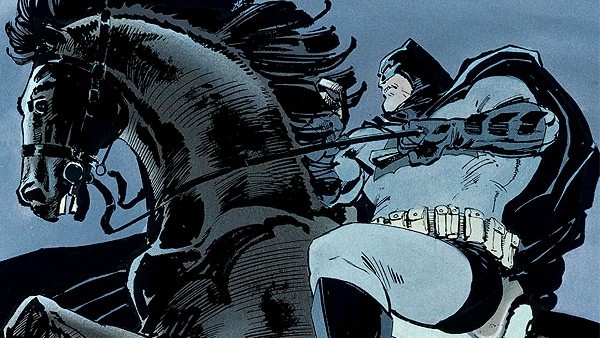Is This The Worst Batman Comic Ever?
4. Masterminding The Dark Knight's Return

For all it's worth dunking on All Star Batman, it's equally worth examining the trajectory of Miller's efforts beforehand.
Today, his name commands as much respect as it does controversy - for good reason - but for a long time he was rightly considered a legend of the medium. His run on Daredevil was groundbreaking, and influenced pretty much every single other interpretation of the character thereafter; Sin City remains a standout independent publication, and his work on Batman - although frequently over-credited with restoring the character to his darker roots - is rightly lauded as some of the character's best.
Mainstream narratives tend to over-exaggerate the transformative effects of Miller's first DC work, The Dark Knight Returns, on Batman, but that isn't to say it wasn't important. Although key industry figures like Dennis O'Neil, Neal Adams, Steve Englehart Marshal Rogers and others had all divested from the Silver Age motif that governed the character throughout the fifties and sixties, the delineation between their Batman and Miller's is clear.
Post-TDKR, DC's Bat-books shifted from bright blue and yellow to black and grey, with more artists opting to take inspiration from Miller, Klaus Janson and Lynn Varley's work on that particular comic. A new visual motif was adopted - one also spearheaded by Miller and David Mazzucchelli's Year One - and it's there where Miller's influence on Batman can best be seen today.

Influence aside, it's also patently accurate to say that both TDKR and Year One are incredible books. The former is a great examination of Batman's enduring legend and how he differs to DC's other heroes, while the latter optioned a now definitive origin for the character.
As well as all of that, Miller's Batman was - while certainly fierce - a hero at heart. There was no implication that he'd lost his humanity, even while being consumed by his new crusade. He wanted to save people, and he was determined to do so even if it meant putting his own, ageing body on the line.
For all there was a cruel streak to this knight, one never got the sense he was off the rails, abusive, or delighted in hurting people. So how did those traits come to define Miller's Batman just a short two decades later?